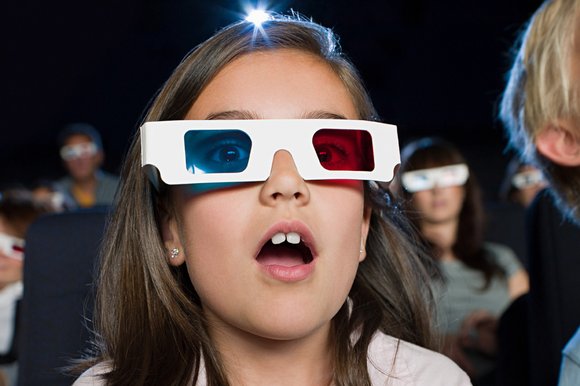3D and your eyes

3D and your eyes
3D displays are becoming more popular both for cinema, television and some hand held displays. There is no evidence that the use of these displays can cause you any harm, but if you have difficulty seeing the 3D effect, or get headaches or any other problems with your eyes you should see your optometrist for advice.
How does a 3D display work?
A 3D display works by separating the picture into two so that one view is seen by one of your eyes and another view is seen by the other eye. Your brain then interprets these two images to give a perception of depth. The separation of the two images is most commonly done by wearing special glasses. Some displays are designed to be used without these glasses, although you may have to look at the display at a particular angle to get the full effect.
Can everyone see in 3D?
No. To see the 3D effect you need to be able to see clearly out of both eyes, and your eyes need to work together. You may not be able to see the full 3D effect if you have a lazy eye, or if your vision is much worse in one eye than in the other. People who have a squint (where one eye turns in or out) may not be able to see the 3D effect.
If you can’t see the 3D effect and you have not noticed this before (for example if you did not realise that you had one eye that was worse than the other) then you should see your optometrist for advice.
Will watching a 3D display do me any harm?
There is no evidence that watching a 3D display will do you any harm, and fixed 3D displays have been around since Victorian times. However, some people’s eyes may not work together as easily as other people’s eyes do, so if you get headaches or eyestrain after watching a 3D (or any other type of) display you should see your optometrist for advice. It may be that the optometrist can suggest eye exercises, or incorporate special lenses called prisms into your spectacles to make you more comfortable.
Are 3D displays safe for children to use?
It is important to make sure that children can see clearly with each eye whilst the visual system is still developing (under the age of about eight years), as if one eye is blurred (for example because they need spectacles in one eye) or if the two eyes are not working together then the child can develop a permanently lazy eye if it is not treated. There is no evidence that watching a 3D display can cause any problems in children, but if your child has problems seeing the 3D effect then it is most important that they see their optometrist for an eye examination to make sure that this is normal for them.
Extract from The College of Optometrists






